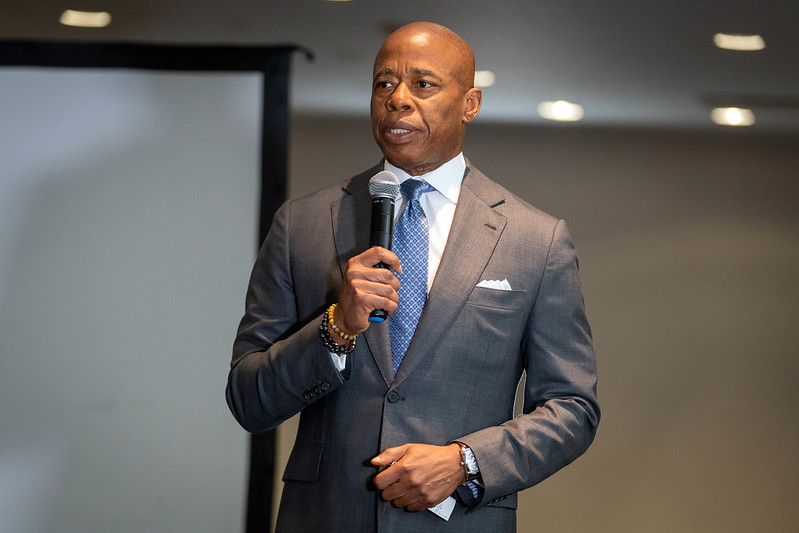Mayor Adams is moving ahead on his signature proposal to build more housing. The first-term Democrat’s City of Yes for Housing Opportunity is heralded as the most pro-housing zoning reform since New York adopted a 1961 framework constricting development. Given the city’s deep housing shortage and affordability crisis, it’s a timely proposal working its way through review.
While Adams faces low public approval ratings, governance questions, and ongoing scandals, City of Yes is among a handful of the mayor’s marquee policies for which he deserves more credit. Increased scrutiny is of course warranted ahead of Adams’ 2025 reelection bid; here are several key areas where he is doing notably well:
New York’ top crisis is housing, and Adams has pushed to add housing affordable to working and middle class people. He helped secure important wins this year from Albany, working with pro-housing ally Gov. Hochul — though he could have given her a boost on her ambitious 2023 proposal to require housing growth across the state.
It will only potentially create a fraction of the new housing New York City needs, but Adams’ City of Yes proposal is “the biggest in the history of New York City zoning for the purpose of housing supply,” according to Planning Director Dan Garodnick. It will create, Garodnick says, “the housing that we need without the dramatic changes that people fear happening in any single place.”
The plan allows for a modest amount of new housing citywide, including in areas that have been hostile to virtually any new development, and includes an essential onus on transit-oriented development — which should be even more of a focus given it addresses the housing, climate, and congestion crises while taking advantage of and bolstering New York’s robust mass transit system.
Adams has smartly made City of Yes a central administration slogan. He has applied the mantra to economic development, including relevant zoning reforms already passed by the City Council. He worked with partners to pass a massive Willets Point development plan that will include a new soccer stadium, a school, “the largest 100% affordable housing project in 40 years,” and more as part of a new Queens neighborhood.
The administration is advancing various other job-creation projects, several utilizing waterfront sites, some city-owned — like turning the Brooklyn Army Terminal into a “climate innovation hub.”
Adams has been frank about his own struggles with undiagnosed dyslexia and importantly made youth literacy a focus. While on this count and others New Yorkers still need to see full execution of good ideas, the mayor has advanced planks to ensure much-needed increases in reading at grade level, especially for younger students from the most disadvantaged communities, whose literacy rates Adams rightly calls a scandal.
The city is requiring phonics-based reading instruction and instituting more dyslexia screenings to provide early intervention where necessary. “Too many young people are part of the pipeline to jail because of a lack of literacy and dyslexia screenings,” Adams said. As of September, he pledged, “this curriculum will be used in every early childhood and elementary classroom across our city.”
Adams also has a solid record on NYCHA, public housing that is too often crumbling around its half-million residents. He’s done well not interfering with revitalization efforts already in motion, like the RAD/PACT program.
But Adams and his team also added to the toolkit to help save tens of thousands of affordable homes by securing Albany passage of the NYCHA Preservation Trust, another mechanism for investment.
The mayor also signed off on the important yet controversial plan to demolish and rebuild public housing on Manhattan’s West Side, while adding new mixed-income housing on the property and utilizing an important asset to increase supply. The city should probably advance other similar proposals quickly and still more “infill development.”
The city’s “trash revolution,” making sure unsightly and leaky trash bags get put in containers, is a key Adams initiative that he understands was overdue.
As the mayor says, moving the city’s millions of tons of garbage into containers is a key front in the war on rats and a broader quality of life initiative. New Yorkers deserve more access to their sidewalks, and for them to be cleaner and better smelling.
Eventually, it will also be good for sanitation workers, too, given how bin automation can reduce their back-breaking work.
Max is executive editor and program director at New York Law School’s Center for New York City Law. He hosts the Max Politics podcast.
